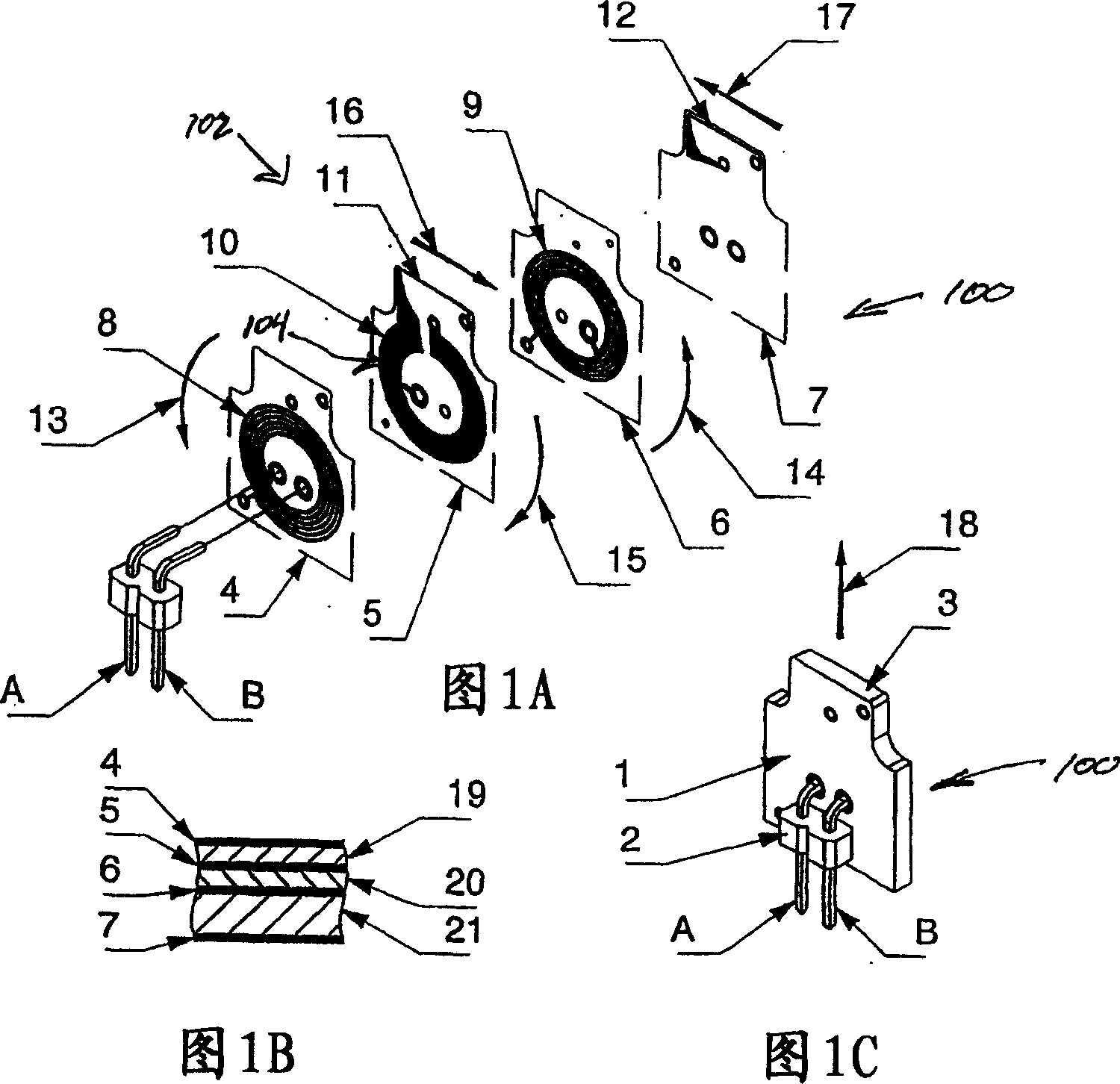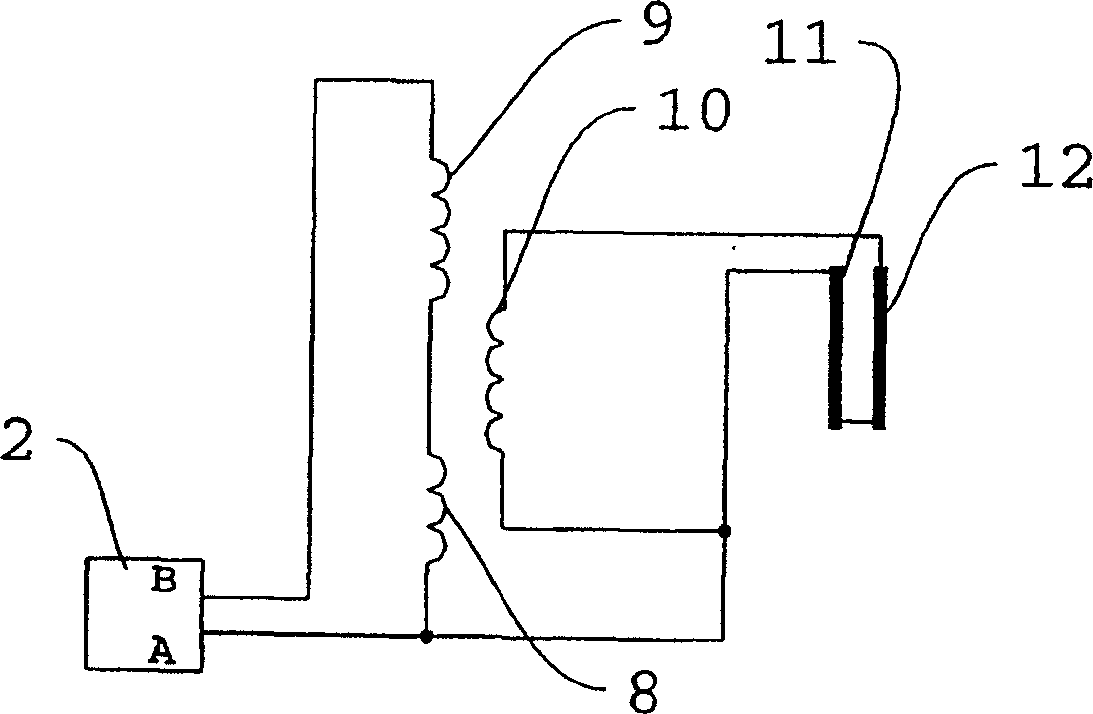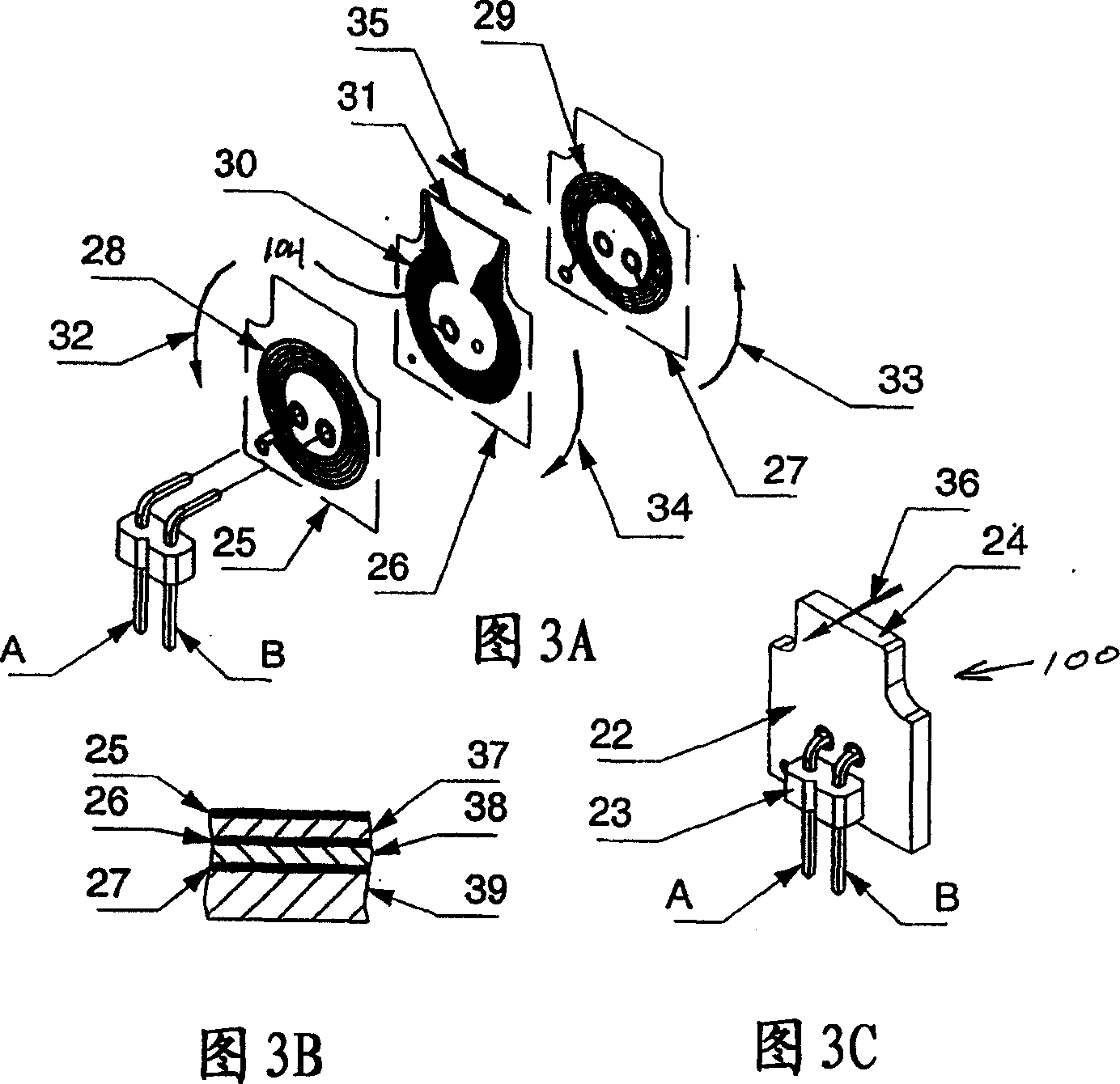Induction sensor using printed circuit
An inductive sensor and printed circuit technology, applied in the field of inductive sensors, can solve the problem of adding interference sources to wires
- Summary
- Abstract
- Description
- Claims
- Application Information
AI Technical Summary
Problems solved by technology
Method used
Image
Examples
Embodiment Construction
[0030] The planar inductive sensor 100 shown in FIG. 1 includes a multilayer printed board 1 and a two-wire connector 2 . This sensor has an active area close to the leading edge 3 of the multilayer printed board 1 . The multilayer printed board 1 comprises four active layers 4 , 5 , 6 and 7 separated by composite separating dielectric layers 19 , 20 and 21 of glass fibers. All of the holes shown in Figures 1A, 1B and 1C have internal metallization, thereby allowing connections between wires in the active layers 4, 5, 6 and 7 associated with the respective holes.
[0031] In the active layers 4 , 5 and 6 there is a current transformer 102 formed with two primary helical coils 8 and 9 connected in series and a secondary single-turn coil 10 . The secondary coil 10 of the converter is connected to the working coil 104 formed by the wires 11 and 12 . The conductors 11 and 12 of the working coil are in the closest proximity to the sensing edge 3 of the multilayer printed board 1 ...
PUM
| Property | Measurement | Unit |
|---|---|---|
| thickness | aaaaa | aaaaa |
Abstract
Description
Claims
Application Information
 Login to View More
Login to View More - R&D
- Intellectual Property
- Life Sciences
- Materials
- Tech Scout
- Unparalleled Data Quality
- Higher Quality Content
- 60% Fewer Hallucinations
Browse by: Latest US Patents, China's latest patents, Technical Efficacy Thesaurus, Application Domain, Technology Topic, Popular Technical Reports.
© 2025 PatSnap. All rights reserved.Legal|Privacy policy|Modern Slavery Act Transparency Statement|Sitemap|About US| Contact US: help@patsnap.com



